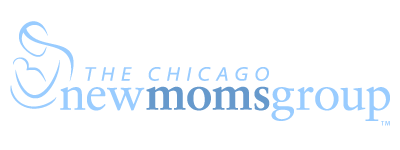Q+A with Jill Rabin, Pediatric Speech Pathologist and Lactation Consultant who Specializes in Feeding
1. Tell us a little about yourself and your practice.
I’m a pediatric speech pathologist and international board-certified lactation consultant in the north suburbs of Chicago. I’ve been working with pregnant moms and infants to 3-year-olds for over 37 years. My areas of specialty include prenatal counseling for families who want to breastfeed a baby with a diagnosis like cleft palate or Down syndrome, helping complex breastfeeding dyads, and helping babies struggling to transition to solids. I also work with babies with complex feeding difficulties, such as food refusal or aversion, using responsive and child-directed feeding approaches like BLW. I provide speech and feeding evaluations and therapy to babies through Early Intervention.
2. Describe the benefits of Baby-Led Weaning and what makes it different from the more typical way of feeding solids that many parents think of.
There are SO many benefits of BLW that it is hard to list them all. First off, BLW leads to intuitive and independent eating where babies determine their hunger and satiation versus an adult determining it for them. Because babies have more control over what they eat, and it is child-directed, they tend to eat a larger variety of foods and struggle less with picky eating. Because everyone eats as a family with BLW, they are eating nutrient-dense table foods versus processed baby foods. They are also working on more complex chewing skills early on due to all the experience of gnawing on strip-shaped foods versus just swallowing purées. Research also shows that babies who learn to eat with a BLW approach have more sophisticated language comprehension and production.
3. How do parents know when the time is right to start transitioning their babies to solids? Is there an ideal age?
Readiness varies for each child but some good guidelines are that your baby is 6 months or older and that they can sit with support in the highchair without falling over. Another sign is when your baby appears interested in the food you are eating. Feeding is very developmental and some babies just need a little extra time until they are ready.
4. Can you provide guidelines about the amount of food babies should eat based on their age?
While there may be some published guidelines on approximately how much your baby should eat, the amount a baby eats is individual and in the first 3 months of learning to eat solids, babies may not take in a lot of volume as they are learning chewing skills. A better guideline would be watching the babies' cues of when they are hungry and signs of when they are full, e.g. crying, dropping food on the floor, etc. versus focusing on a specific amount.
5. What are some common issues parents face while their babies are transitioning to solids and what do you recommend?
Parents often struggle with how much their baby should be eating (see answer above) what foods are safe for their baby and how to present them, and that their baby will choke. I would advise parents to start reading information from professionals such as dietitians, feeding therapists, etc. to help guide them and to be cautious about what they follow on social media. I recommend a choking and CPR course for all parents and caregivers (I have a link to two classes on my website) so they feel more confident.
6. What guidance can you offer families who are feeling overwhelmed by the experience of starting solids?
I teach a virtual transition to solids class for parents that I suggest they take when their baby is 4-5 months of age. I provide coaching for those families who need some guidance. Parents can also refer to my book, website, and Instagram for examples of how to offer solid foods.
7. Is there anything else you’d like to share with our community of new mom readers?
I created a systematic and safe approach to help babies with feeding challenges transition to solids called the Adapted Baby-Led Weaning Approach. I coauthored a book about it called: Your Baby Can Self-Feed, Too! with baby-led weaning pioneer Gill Rapley.
